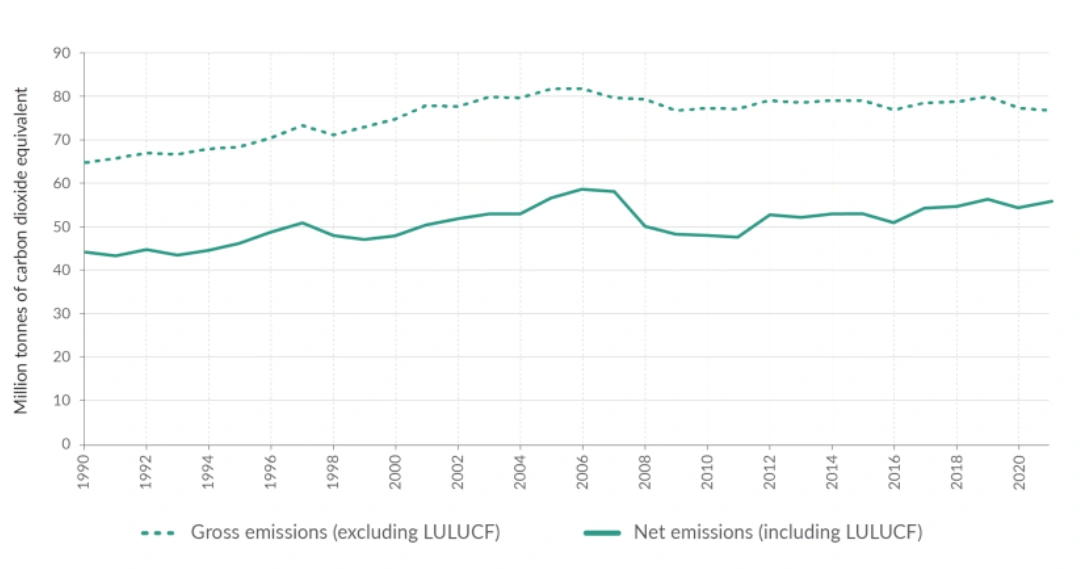Last week, we sent a chart that showed Australia's emissions including and excluding the Land Use sector. It prompted many comments and questions. So, let’s do a deeper dive.
What is 'Land Use'?
When Australia reports its national greenhouse inventory, it divides emissions into five sectors. One of them is Land Use. (Its long name is Land Use, Land-Use Change and Forestry, aka LULUCF). LULUCF refers to human activities that make land either a source or sink of emissions. A sink is anything that removes greenhouse gases from the atmosphere. Think deforestation and reforestation. Land Use is the key sector of both emissions and removal of carbon dioxide. So it's critical in our path to 'net zero'.
We're not the first to separate Land Use from total emissions. Some organisations that track global emissions exclude it altogether. E.g. Germany’s Potsdam Institute for Climate Impact Research and the Climate Action Tracker. That’s because LULUCF datasets are nearly impossible to reliably combine. Estimates vary wildly and are subject to fluctuations as methodologies change.
Net v Gross Emissions
New Zealand reports Land Use separately from total emissions (chart below). The country also uses this separation as a proxy for ‘net’ versus ‘gross’ emissions. That's not entirely accurate, because LULUCF includes emissions as well as sinks. But it's the closest we can get for now.

Separating Land Use in Australia's Emissions Reporting
Australia relies heavily on Land Use to claim emissions reductions. National greenhouse gas reports show a dramatic fall in the sector's emissions since 2005 (chart below). Just what is happening behind this curve will be the subject of a future briefing. Emissions from LULUCF have not changed for two years (-63.8 Mt CO2-e* since June 2021). The sector's plateau coincides with Australia's stalling emissions reductions overall.
When Australia reports its net emissions, it simply refers to ‘emissions’ as shorthand. This conflates the two concepts of gross and net.
Australians need to boost their climate data IQ. We believe tracking net and gross emissions separately - albeit with an imperfect proxy - would be a good start.
